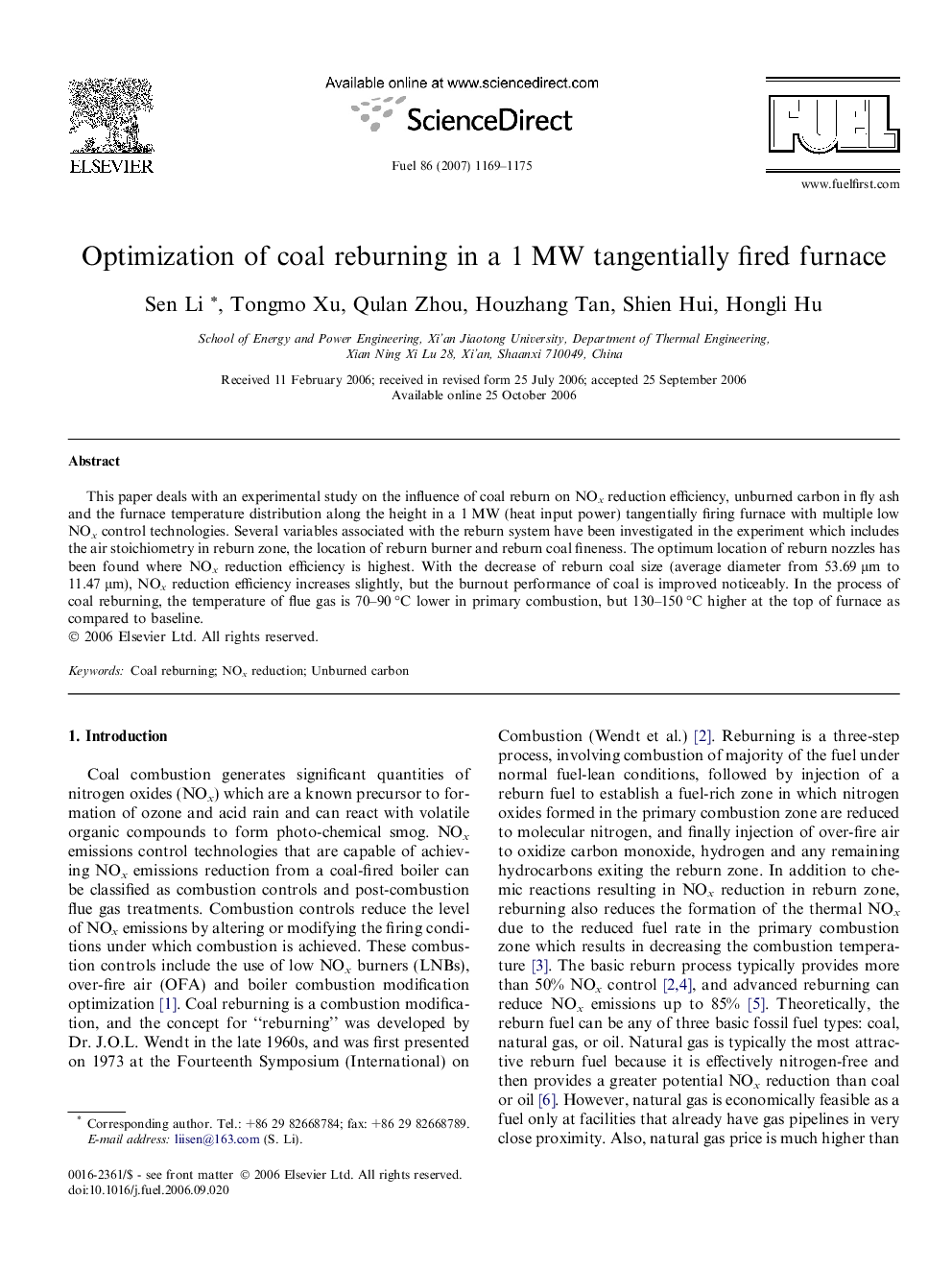| Article ID | Journal | Published Year | Pages | File Type |
|---|---|---|---|---|
| 208332 | Fuel | 2007 | 7 Pages |
This paper deals with an experimental study on the influence of coal reburn on NOx reduction efficiency, unburned carbon in fly ash and the furnace temperature distribution along the height in a 1 MW (heat input power) tangentially firing furnace with multiple low NOx control technologies. Several variables associated with the reburn system have been investigated in the experiment which includes the air stoichiometry in reburn zone, the location of reburn burner and reburn coal fineness. The optimum location of reburn nozzles has been found where NOx reduction efficiency is highest. With the decrease of reburn coal size (average diameter from 53.69 μm to 11.47 μm), NOx reduction efficiency increases slightly, but the burnout performance of coal is improved noticeably. In the process of coal reburning, the temperature of flue gas is 70–90 °C lower in primary combustion, but 130–150 °C higher at the top of furnace as compared to baseline.
